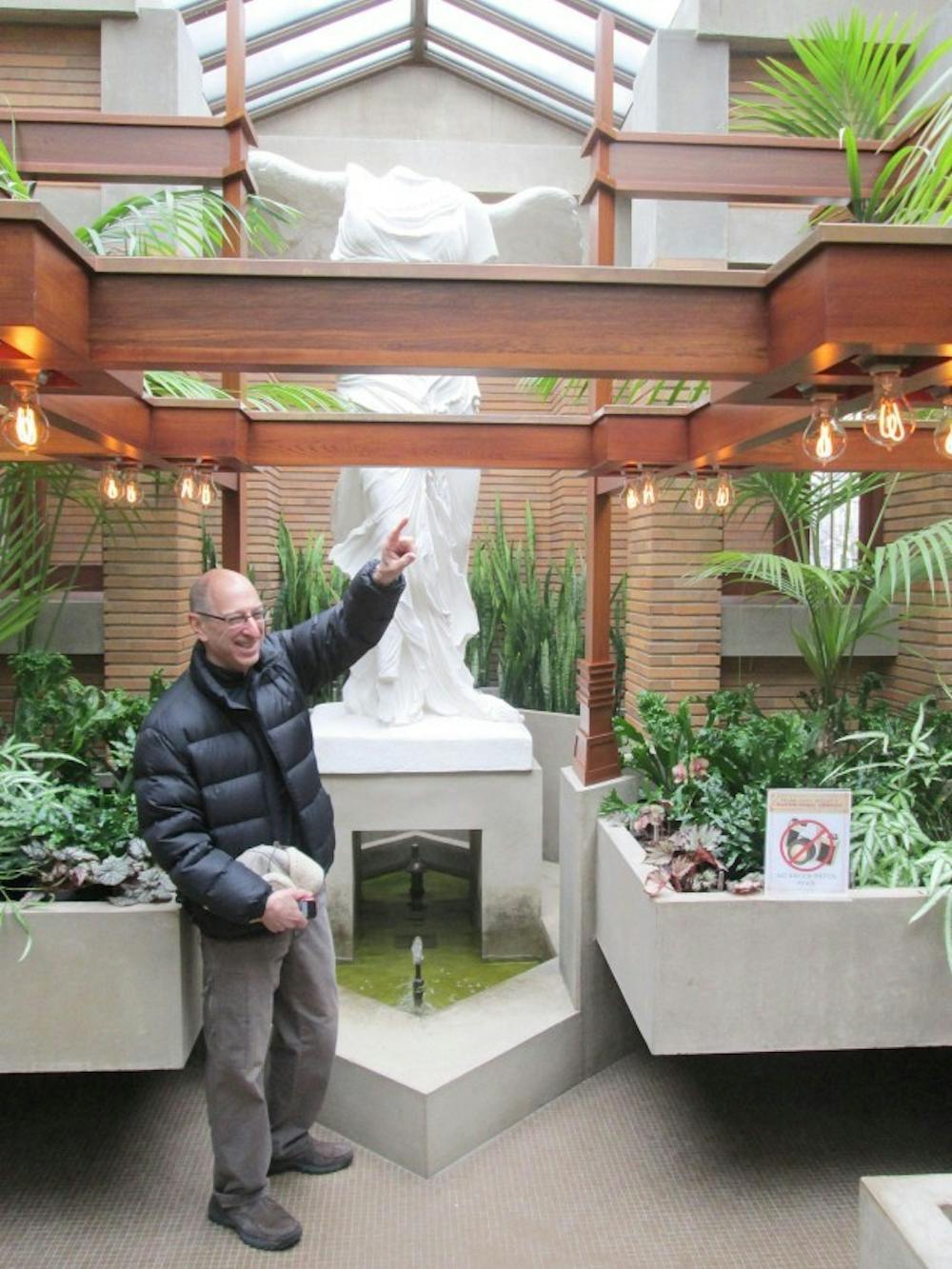Frank Lloyd Wright once said, "There should be as many houses as there are people." Wright believed each person's house should accommodate his or her individual needs, and Wright's ability to incorporate each homeowner's diverse personality into his designs makes him one of the most respected architects in American history.
Wright is most famous for designing renowned structures, such as Fallingwater and the Guggenheim Museum, but one of his most beloved works is the Darwin Martin House, located in Buffalo's historic Parkside neighborhood.
Led by Edward Steinfeld, a professor of architecture, UB students in the architecture department recently visited Wright's Martin House Complex. The purpose of the students' visit was to help make changes that will enable visitors with visual impairments to appreciate the architecture and develop their own interpretations of the work.
This approach to architectural design is called "universal" or "inclusive" design, something that has fueled Steinfeld's work. The idea is to create shared experiences for the diverse crowds who tour the house in order to provide a multi-sensory experience much like Wright tried to do in his own work.
The Guggenheim Museum is one of the first universally accessible public buildings and was constructed before any laws required handicap accessibility. Further, Wright designed a home in Illinois for a veteran who used a wheelchair.
"I visited that home and found its design to be very much in line with what we teach," Steinfeld said. "Wright was actually a pioneer in universal design."
UB architecture students are creating models of the Martin House in which people might "feel" their way through the complex in order to give them a more thorough experience of the space. The focus is to make the building accessible to people who are visually impaired.
The house is currently under reconstruction; on the interior, pieces are missing from walls and the cupboards and decorative pieces are being restored.
In addition to these renovations, the Martin House staff plans to construct a paved sidewalk to make the path to the house wheelchair accessible. They will also mount televisions into the bookshelves to allow wheelchair-bound observers to take a virtual tour of the upstairs.
"I think it's great they're making these changes," said Muhammed Sumbundu, a political science major at Buffalo State College. "How else are these paying customers supposed to get inside the house?"
While these accommodations are a step toward making the Martin House more universally inclusive, there are still limits to the amount of changes that can be made.
"Obviously we cannot rebuild bits of the house," said Martin House tour guide Janice Schroeder. "We are dealing with a historic artifact. You just can't make any drastic changes to things like that."
Though these plans have yet to be implemented into the complex, it is something patrons, architecture students and even current employees of the Martin House think are necessary and well overdue.
Those who are interested can visit the Darwin Martin House for $20 or $10 with a student discount. The house has scheduled tours Mondays, Wednesdays, Fridays and Saturdays at 11 a.m., 12 p.m. and 1 p.m., and Sundays at 12:30 p.m. or 1:30 p.m.
Email: arts@ubspectrum.com





